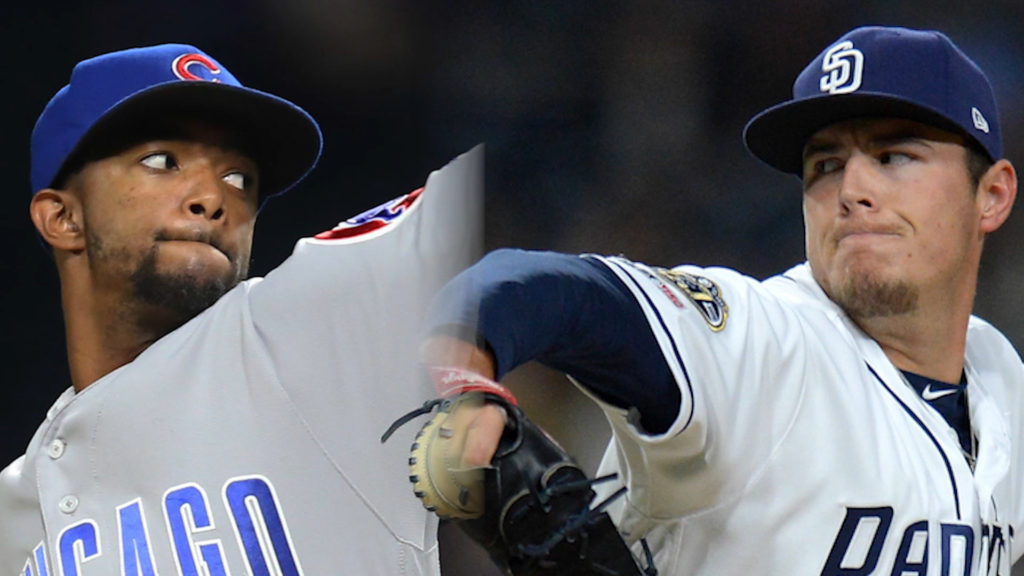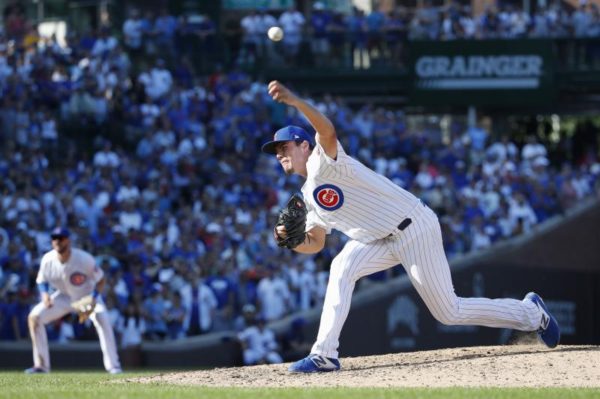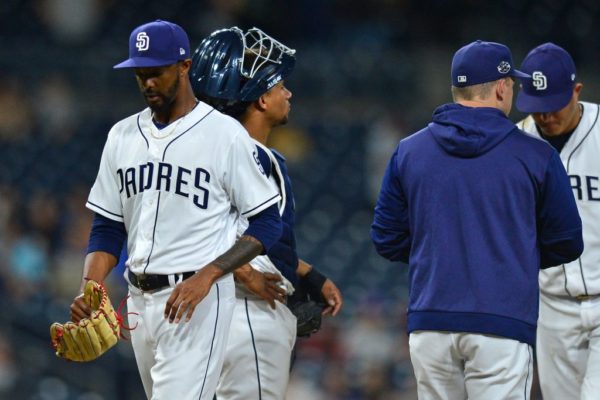A look back at the Brad Wieck/Carl Edwards Jr. trade

Credit: NBC

An analysis of the Brad Wieck for Carl Edwards Jr. trade that the Chicago Cubs and San Diego Padres completed in July.
The trade that made the most noise around the deadline for the San Diego Padres was the Franmil Reyes/Taylor Trammell trade. However, this was not the only move A.J. Preller made at or near the deadline.
Shortly after the deadline passed, it was announced that the Padres traded LHP Brad Wieck to the Chicago Cubs for RHP Carl Edwards. Let’s take a look back at this trade.
Wieck had a stellar but brief 2018 season for San Diego. In seven innings, Wieck only surrendered one run while striking out ten. 2019 was not as friendly to the 6-foot-9 southpaw. Through 24.2 innings as a Padre, Wieck had a 6.57 ERA, a 1.419 WHIP, and 31 strikeouts. A.J. Preller saw enough from the lefty, so he dealt Wieck to Chicago.
In return, the Padres received Carl Edwards Jr., a hard-throwing right-handed pitcher. Edwards Jr. was a key bullpen piece in the Cubs’ magical World Series run. However, that same type of pitcher seems to no longer be there. In Edwards’ first four seasons as in the majors, he never had a season ERA above four. For the Cubs in 2019, Edwards had a 5.87 ERA in 15.1 innings. Despite Edwards’ prior success, Cubs’ GM Theo Epstein also saw enough.
This trade was an opportunity to provide a change in scenery to both players.
A.J. Preller and her staff were willing to give up a lefty that threw 95 mph hoping that Balsley and company could recreate the success that Edwards Jr. once had. This was a very risky moven given the lack of success from Padres lefty relievers in 2019. Robbie Erlin(5.53 ERA), Matt Strahm(3.16 ERA), and Adrian Morejon(10.13 ERA) have not always been dependable. Getting rid of one of the few left-handed options you have in the middle of the season was questionable.
Since the trade occurred, it has been a different story for the players involved in the trade.

Edwards Jr. started his tenure as a Padre in El Paso. His time with the Chihuahuas only lasted three outings, where he allowed three runs. Edwards Jr. got the call back to the show and made his Padres debut on August 11th.
Two runs crossed after he allowed two hits and walked two in the showing. He would get another shot the next day in a garbage time situation against Tampa Bay. Edwards wouldn’t finish the inning, surrendering four runs before being pulled by manager Andy Green. Carl Edwards Jr. has been sidelined with a shoulder injury since.
Wieck was held in the minors until September by the Cubs. He allowed only one run in 5 2/3 innings while striking out eleven. Once the lefty was recalled, he fixed what had not been working in San Diego. In 13 appearances, Wieck only surrendered two runs and struck out 18 batters for Chicago. One of the main factors in his success with the Cubs has been his curveball. As a Padre, he mainly used his slider, and it wasn’t working. His curveball was thrown for a strike 56.3% of the time with the Cubs, and opponents were hitting a measly .133 against the pitch.
At the moment, this trade does not look good for San Diego. The Padres will continue to try to get the Carl Edwards Jr. back that pitched the 10th inning of game 7 in the 2016 World Series. With the Padres looking to reach the playoffs next year, having a reliever with experience in October can be crucial.
Dominic is a graduate of Arizona State University’s Walter Cronkite School of Journalism and Mass Communication, with a bachelor’s degree in Sports Journalism. He also is the producer and co-host of the “Padres EVT Podcast.”
The roster spot alone could be more valuable than either. Not much to see unless Balsley see something he can fix to minimize walks and increase control. One season in 5 where his BB/9 are 3.5 and his HR/9 at its highest. Ummm pass.